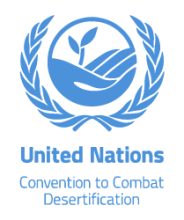Resource information
In a world grappling with the challenges of food insecurity, climate change, landscape degradation, and rural poverty, regreening offers a path forward, especially in dryland areas. The transformation of degraded landscapes—restoring productivity and increasing resilience through the widespread adoption of agroforestry and sustainable land management practices—can deliver food, climate, and livelihood benefits.
Table of contents:
Part I. Introduction
Part II. How and Where is Regreening Happening?
Part III. The Impacts Of Regreening
Part IV. The Six Steps of Scaling Up Regreening
Step 1. Identify and Analyze Existing Regreening Successes
Step 2. Build a Grassroots Movement for Regreening
Step 3. Address Policy and Legal Issues and Improve Enabling Conditions for Regreening
Step 4. Develop and Implement a Communication Strategy
Step 5. Develop or Strengthen Agroforestry Value Chains And Capitalize on the Role of the Market in Scaling Up Regreening
Step 6. Expand Research Activities to Fill Gaps in Knowledge About Regreening
Part V. Concluding Thoughts



